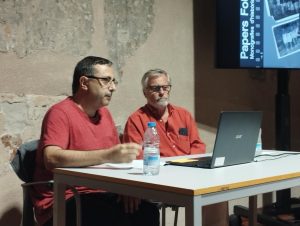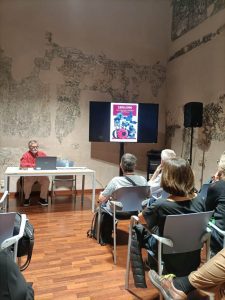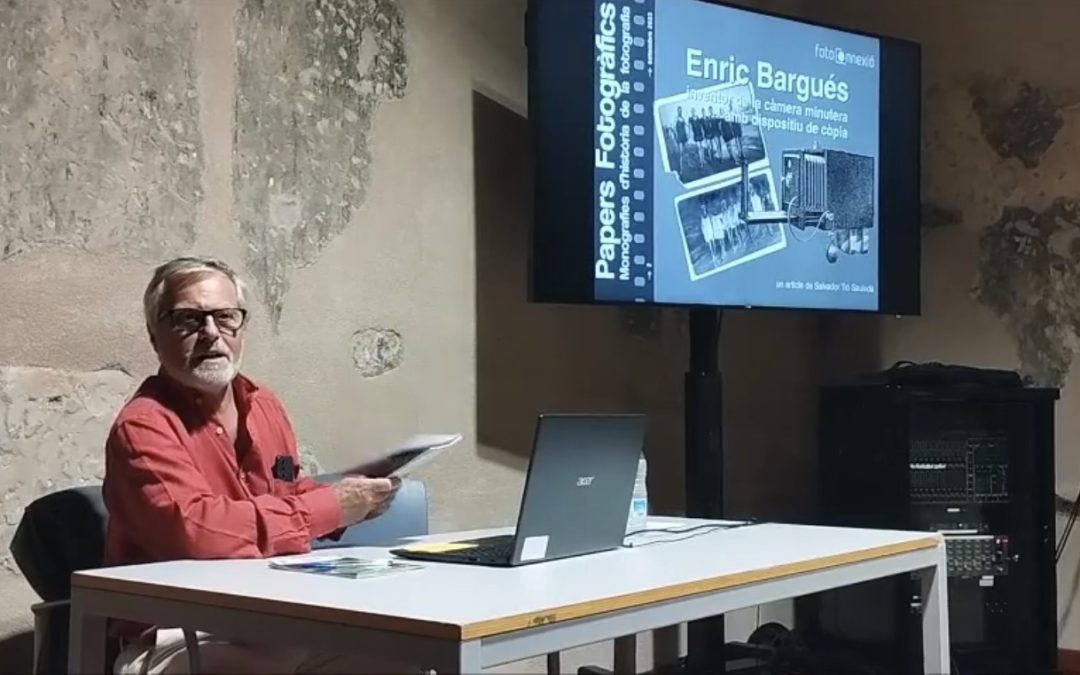On Thursday, October 19, the second issue of the magazine Papers Fotogràfics (https://www.fotoconnexio.org/en/repository/papers-fotografics/) was presented, a work by Salvador Tió Sauleda dedicated to the figure of Enric Bargués and the evolution of automatic cameras to the minute camera that we can still find in cities all over the world.
After the presentation by Ramon Barnadas, Salvador Tió told us how, thanks to a friend of his, he got his hands on a catalog of photographic cameras from 1917, and found an advertisement by Enric Bargués, and so it went begin his investigation of this character, linked to the evolution of photographic automata until reaching the minute cameras we know today.


In 1917, Enric Bargués (1883-) submitted the application for a patent for an invention for obtaining positive copies with a photographic camera provided in the laboratory and using as a cliché a cardboard emulsified with bromide. With this invention, the single-copy ferrotype system of minute cameras was replaced by a negative-positive system with conventional silver bromide photographic paper. After the first automatic photography device, Joan Cantó’s Automatic Photographic Scale in Barcelona in 1887, and its subsequent failure, Nievsky took up the idea of a camera with a laboratory included, and using ferrotype dry plates, launched the first minute camera in 1891, and a succession of cameras followed including a laboratory. Finally, in 1917, Enric Bargués, who had been building photographic cameras since 1914 and had formed a partnership with Pere Farias and Velasco, would present the patent for a camera with a laboratory and prepared to make a negative on gelatine bromide paper, and by re-photographing it, obtain the positive copy, also on gelatinobromide paper. The innovation was later adopted by other manufacturers.


We were lucky enough to have in the audience a small-time photographer, Barbara Ghidini, who continues to practice this mode of portraiture in the streets of Barcelona.

